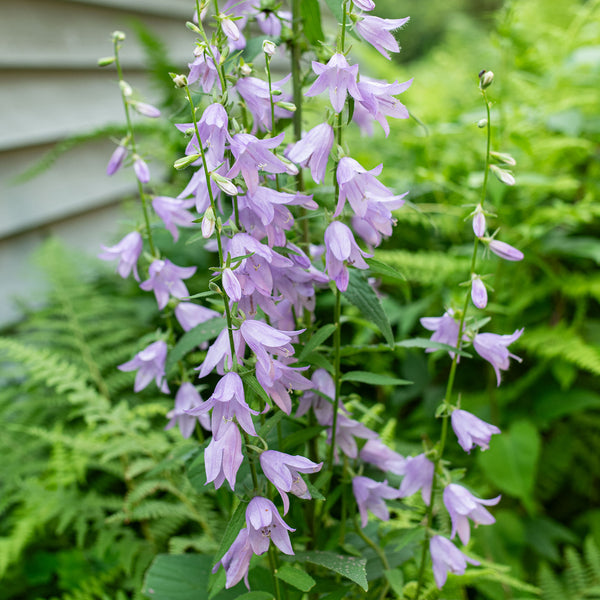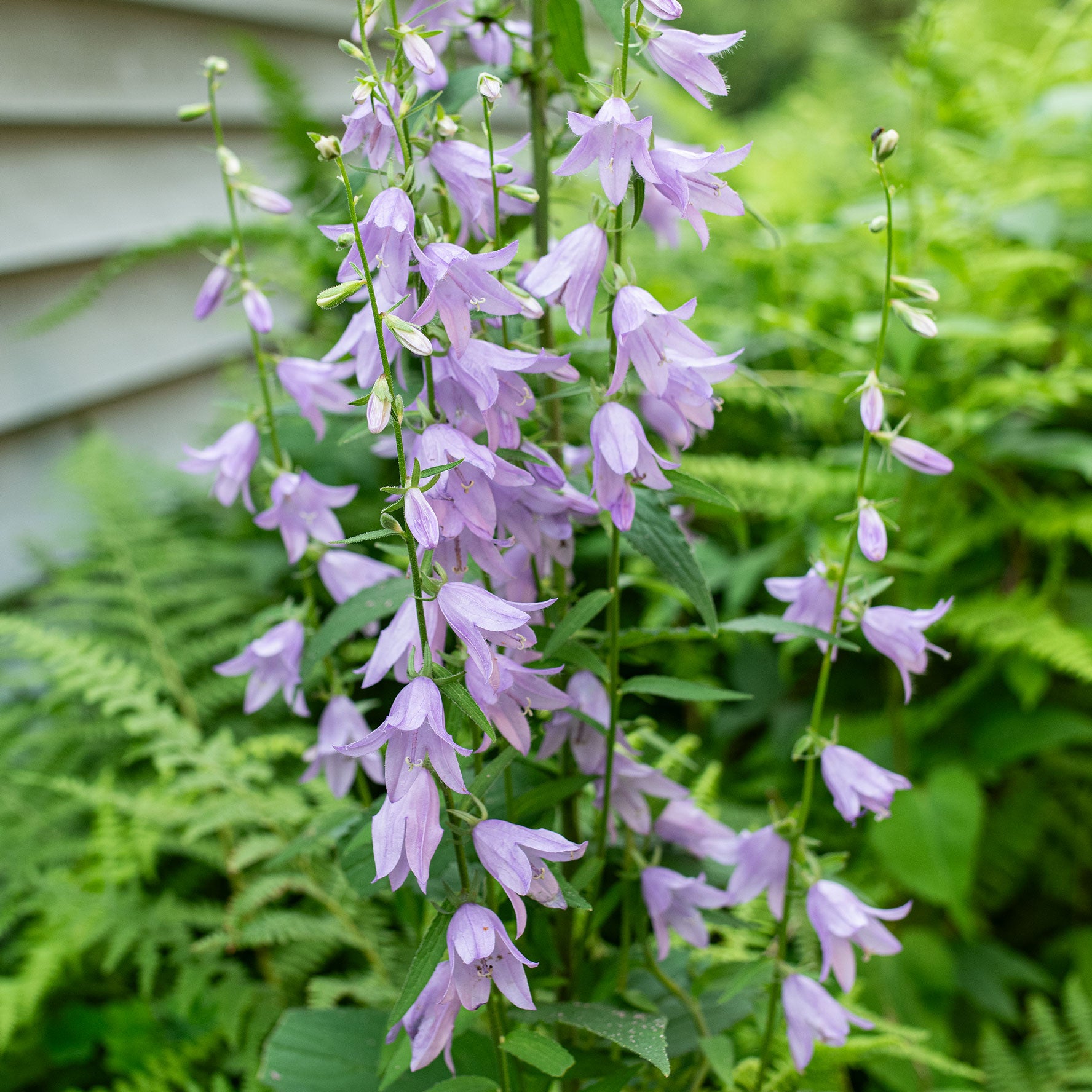SOWING INSTRUCTIONS
Depth:
Surface sow and press in lightly.
Starting Indoors:
Sow indoors 8 weeks before last frost in spring. Keep at 65-75°F. Cover lightly with a sprinkling of vermiculite. A period of cold stratification may be beneficial to increase germination, but is not necessary.
Starting Outdoors:
Sow in late spring or winter sow into pots in the shade, covered with a thin layer of clean sand and a wire screen to keep out mice and voles. Check for moisture at regular intervals.
WHEN TO SET OUTSIDE
In spring, after last frost.
PLACEMENT & CULTIVATION
Ladybells, also called lily leaf lady bells, are native to parts of Asia and Europe. Due to their substantial roots and freely seeding ways, they are survivors in old gardens, along with the similar C. rapuncloides, the latter having flowers arrayed only on one side of the stem. Ladybells bloom during the summer. Hardy and floriferous in a wide growing zone range, they require little care in moist but very well-drained soils and should not be divided, as thier sturdy roods resent disturbance. The lightly fragrant flowers are a bonus, and butterflies are drawn to the columns of blooms.
Watering Details:
Provide about one inch of water a week, avoiding saturated soils.
Soil pH:
Slightly acidic to neutral pH
Fertilizer:
Mix in about 2" of compost prior to planting. Apply a thin layer of compost each spring.
Diseases & Pests:
Protect young plantings from slugs, using organic pelleted bait if they damage plants.
When to Cut for Bouquets:
Harvest when 1/2 of the flowers on a stem are open.
































